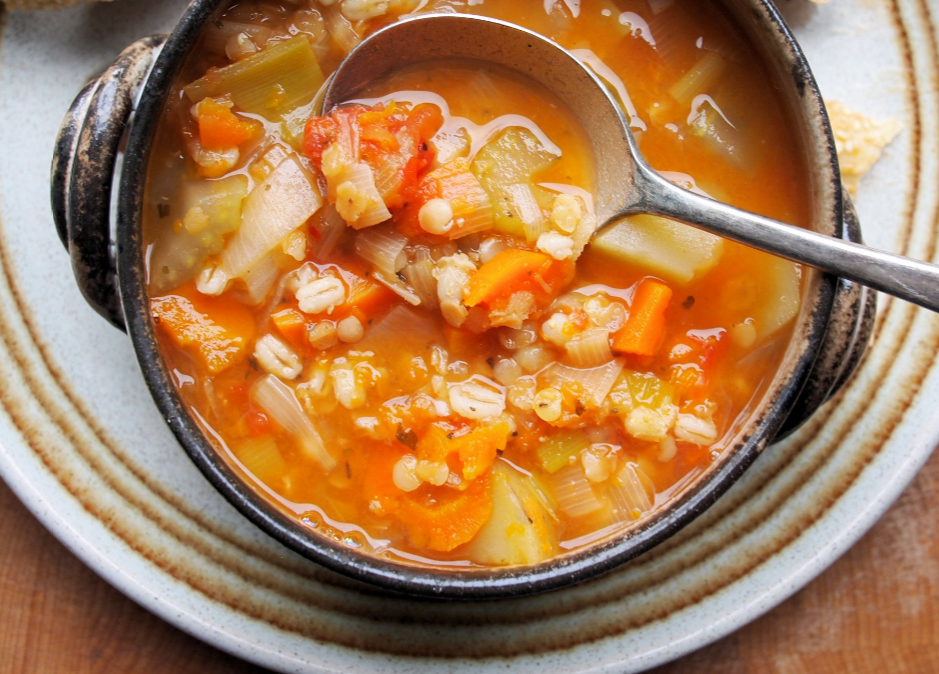Elimination diets are not for the faint of heart. They’re very restrictive, last longer than convenient, and generally require extra prep time in the kitchen or more money at the store. Still, the potential benefits are huge. From autoimmune disease to autism (to IBS, leaky gut, food allergies, depression, neurological issues, etc.) elimination diets can induce remission, heal the digestive tract, pinpoint food allergies, jumpstart weight loss, and restore overall health and vitality.
Two elimination diets that bring out the big guns for gut healing are the Specific Carbohydrate Diet and the Gut and Psychology diet. Though initially developed for different conditions (Crohn’s and autism, respectively), their similarities and effectiveness at treating a wide range of conditions show how many conditions originate from poor GI health. In this blog series I discuss the how’s and why’s behind the phases of these diets. For more about how I discovered these protocols and why I’ve used them, start here.
For the second post of this series, we’ll learn about Phase I.
When prepping is life.
The introduction phase of a GAPS or SCD diet is both the simplest and the most challenging; simple for its tiny list of approved foods, challenging because the short menu can bore you to tears. The variety of dishes and flavors is limited -even with your most creative chef’s hat on- and if this phase must be implemented for longer than a day or two, it requires a large dose of willpower and possibly the removal of all off-plan foods from your pantry to a locked bunker. On the upside, it can turn around digestive distress almost immediately.
Preparation is the key to surviving this stage of the elimination diet. Not only will you be needing far more bone broth and steamed vegetables than you ever would’ve imagined, but preparing a few finished soups and sides will go a long way in keeping you on track. If you can’t open the fridge when you’re hungry and grab something on the plan without peeling, chopping, and simmering, it will be exponentially harder to stay on track.
If possible, involve your family and/or housemates in your plan. Their support will be invaluable and their understanding of your dietary needs through this time is essential.
Dos and Donts
Phase I is all about doing no harm. Foods requiring anything beyond the barest amount of effort to digest are removed from the diet. This eliminates the complex carbohydrates in grains and added sugars and the fibrous bulk of raw fruits and vegetables. Though we generally think of these foods as healthy, an impaired GI tract is unable to break these nutrients into absorbable parts and pieces. Not to mention the irritation that fiber can cause to an inflamed gut.
Quality animal fats and bone broth form the cornerstone of this phase, both for their high nutrient bioavailability and for the specificity of those nutrients in healing the lining of the digestive tract (hat tip to glutamine and collagen). The healthy fats also serve as an energy source in the early phase of the diet when carbohydrates are, by default, restricted. Bone marrow may be enjoyed as-is or added to broth.
Peeled and steamed vegetables (nightshades excepting) are allowed provided their fiber content isn’t too high. Long, slow cooking methods and pureeing are recommended. If severe GI distress is in effect, it’s recommended to stick with the easily-absorbed boiled carrots for the first few days.
No-sugar-added applesauce can be included in small amounts for a wild dessert experience. Other allowed foods on the SCD protocol are 24-hour fermented dairy and gently-scrambled eggs.
The Workings
Foods are made up of macronutrient chains (proteins, fats, and carbohydrates), a variety of micronutrients, and water. During digestion, the stomach and small intestine go to work on disassembling those macronutrient chains into single molecules so that they can be chaperoned through the gut lining and put to use in the body. For example, when we eat protein, our enzymes break it down into single amino acids for maintenance and repair. Starches are broken down into glucose molecules for immediate and stored energy. Fats become fatty acids, responsible for an endless number of structural and functional roles in our cells. The various vitamins and minerals are disentangled from fibers and other matter and perform all sorts of roles in the healthy body.
In a compromised GI tract, this process is disrupted through a combination of incomplete breakdown and a damaged gut lining. This results in two big digestive fails: some food fragments arriving at the large intestine intact and other food fragments passing through the lining of a weakened small intestine and entering the bloodstream. When complex carbohydrates enter the large intestine intact, they provide a food source for the wrong kind of bacteria, encouraging inflammatory colonies to thrive and grow. When food fragments pass into the blood stream they can trigger allergic responses and are suspected to play a large role in the development of autoimmune disease. Other manifestations of these issues waterfall into a range of symptoms, from IBS to eczema to autism.
Equally important to easing digestive effort is repopulating the gut with healthy bacteria. Both the SCD and the GAPS diet recommend adding a healthy dose of daily microbes in the form of kraut juice, fermented dairy, cultured beverages, and a quality probiotic. These are essential to rebuilding a functioning digestive tract, eliminating inflammation, and increasing nutrient absorption.
TIMELINE
The amount of time that Phase I should be followed depends largely on the individual. For someone relatively healthy seeking to repopulate the gut flora or heal minor symptoms, a day or two might be enough. On the other hand, someone dealing with severe gastric distress such as active Crohn's might require a longer rest stop here. A general rule of thumb with elimination phases is to move on only when your digestion levels out after each adjustment. A health practitioner or nutrition coach should be able to help guide you through this process.
Check it out.
- For information on the OG of carbohydrate-based elimination diets: http://www.breakingtheviciouscycle.info/
- And it's cousin: http://www.gapsdiet.com/
- It's no food porn, but this blogger does a great job of chronicaling their intro foods:
- Take your broth skills up to level ninja: https://www.amazon.com/Nourishing-Broth-Old-Fashioned-Remedy-Modern/dp/1455529222

